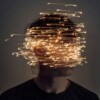What is art?
I have my students answer this question every autumn, and every autumn I get a host of new answers. That’s because “art” is, and always has been, notoriously hard to define.
Sometimes students’ answers revolve around the effects of art: “art is something that moves you in a certain way,” they might say. Or, “art is something that is perceived as beautiful,” or “art is something convicting and eye-opening.” Other times, students’ answers revolve around artistic practices. Thus: “art is the fruit of a therapeutic process,” or “art is a product of supreme skill,” or “art is a burst of self-expression.”
But why is “art” susceptible to all of these different definitions? Why is it so hard to nail down?
One way to understand this problem is to recognize that the very notion of “fine art,” as we know it, is extraordinarily new. Consider: when you visit an art museum, it’s likely that most of the objects you’ll see will not have been considered “art” by the people who made them! This even goes for really canonical, really “artsy” stuff like giant, splendid pictures of biblical heroes. Those majestic paintings by Giotto, Leonardo, or Tintoretto were not made as entertainment; they were actually liturgical objects for focusing prayer.
…But at least that Leonardo stuff was meant to be looked at. Meanwhile the things in the next gallery might not really have been about looking at all. Most African masks, for example, were not meant to be viewed in stillness; they were meant to move, adorn and activate, coming out only on special occasions. And other objects, like Egyptian grave goods, were never even meant for human eyes.
And so, after years of asking my students to define “art,” and after years of studying the visual culture of so many peoples and places, I’ve come to find the word “art” rather monstrous. And I don’t mean “monstrous” in an evil way, I mean monstrous in the sense of Frankenstein’s monster, i.e, something that is a.) brutally cobbled together from other, chopped-up things, and b.) doomed to question its own existence obsessively, until it tends toward suicide.
Put another way, I have come to believe that “art” functions as a catch-all category for any communication (in my field of expertise, that would be visual communication) that is not geared toward solving a definite problem or winning a specific argument – for any communication that is not modernist-positivistic. In fact, one of my students this autumn echoed that sentiment: “art,” he wrote, “has always been everything you feel and think that simply cannot be expressed in a coherent way.” This student, a major in theater arts, wrote his definition with authority and conviction, and with a little bit of impatience. He knows in his bones how slippery the term “art” is, and how vast its field of reference has become. For him the arts are a refuge that also happen to be a whole universe.
Thus, so many different historical things, that did so many differed jobs, have been dismissed as “art”—decontextualized and aestheticized—in modern times. These includes ritual objects, ritual (liturgical) practices, tools for contemplation, regalia, markers of consecration, gestures of prophecy, purely beautiful things, purely moving things, things meant to glorify or ornament other things, monuments, memorials, reminders, epitomes, laments—and the list goes on.
Could it be that we have taken the entire imaginative horizon of our forebears, squashed it into an ill-defined (and brutally commoditized) category, and then sequestered it in galleries and museums where it is neutered and tamed? Could it be that we have chosen to live in a dim and narrow mental box? Have we thus hamstrung our ability to see what some philosophers have called Being—the very essence of what is?
I sometimes try to imagine what it was like in the past, when much of our shared human communication was “artful”—when much of what we created engaged in the ontological description that “art” attempts: the bearing of witness, the offering of lament, the raising up of praise. Consider the “songs” of the prophets. How weird they are—like biblical Broadway musical interludes, when the hero suddenly bursts into song! An example is the Magnificat of Mary from Luke 1 (“My soul glorifies the Lord…”). Did Mary really sing something like that when the angel visited her? And after that did she remember it well enough to pass it on to the Early Christian community? Really?
Yes really, I believe. Because her culture knew how to bear witness. It was a culture with the tools (a prophetic tradition), the memory (in the absence of written-text dependency) and the openness (wrought by grace and pain) to speak to the Being of things—to cry out truth. In such a context, it was not so odd to suddenly sing.
What a shame that all such activity today—all such bearing of witness—is often shrunken into the domain of “art,” relegated to galleries and stages, and proclaimed “aesthetic” and inessential, while a certain kind of low-minded, tactical chatter becomes all.
Here, meanwhile, is the definition of “Art” that my class discussed this past September:
Art is:
A search for truth
Unveiled to the senses
Untainted by ulterior motive
That’s the formula we’re working with right now as we consider the witness today’s “artists” try to bear.
…And if this is “art”—if this huge ocean of saying and singing and gesture and making is “art”—then may all of us be artful. May we indeed be artful just as Jesus was, whose whole life was a witness to truth, unveiled to the senses (gestural, vocal, narrative, Incarnate), untainted and pure.





















